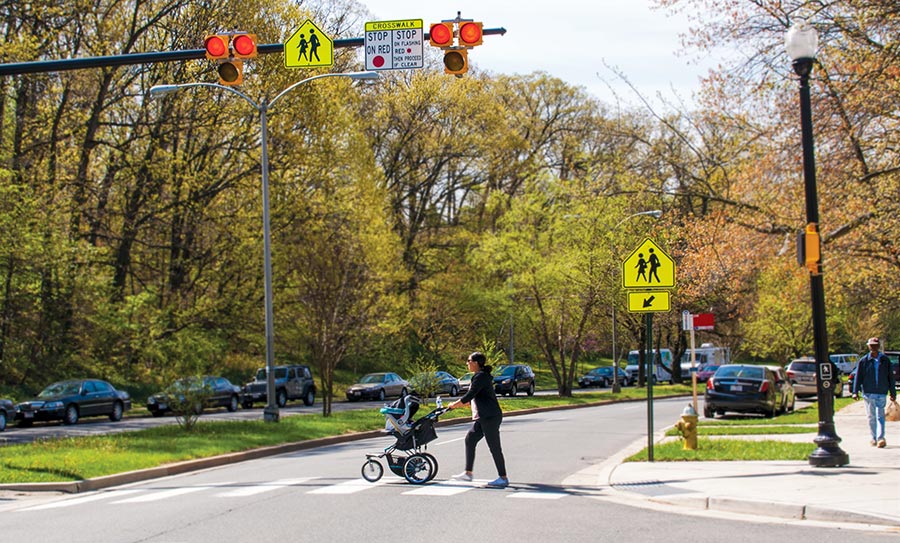Pedestrian deaths have increased 80% since reaching their low point in 2009 and account for 17% of crash fatalities. Two percent of people killed in motor vehicle crashes are bicyclists.
Traffic engineering improvements can reduce pedestrian and bicyclist crashes. Solutions include building median islands and adjusting traffic signals to create an exclusive pedestrian or bicyclist phase or to give them a head start before vehicles get a green light. Lowering vehicle speeds can also reduce injury severity for pedestrians and bicyclists involved in crashes.
Crash avoidance features and other vehicle improvements may also make pedestrians and bicyclists safer. Forward collision avoidance systems are increasingly designed to detect pedestrians in a vehicle's path, and rear cameras may prevent backover crashes. Modifying the front structures of vehicles may reduce the severity of pedestrian injuries. Regulators in Europe and elsewhere have been encouraging pedestrian protection in vehicle design through their vehicle testing programs.
Helmets provide critical protection for bicyclists. Among a majority of bicyclists killed in crashes, head injuries are the most serious injuries. Helmet use has been estimated to reduce the odds of head injury by 50%.
Latest news
Daylight saving time keeps walkers safer
While fewer pedestrians are killed when the clocks change, vehicle occupants fare worse, making the net effect minimal.
April 11, 2024
Tall, blocky vehicles put pedestrians at risk
Vehicles with especially tall front ends are most dangerous to pedestrians, but a blunt profile makes medium-height vehicles deadly too.
November 14, 2023
